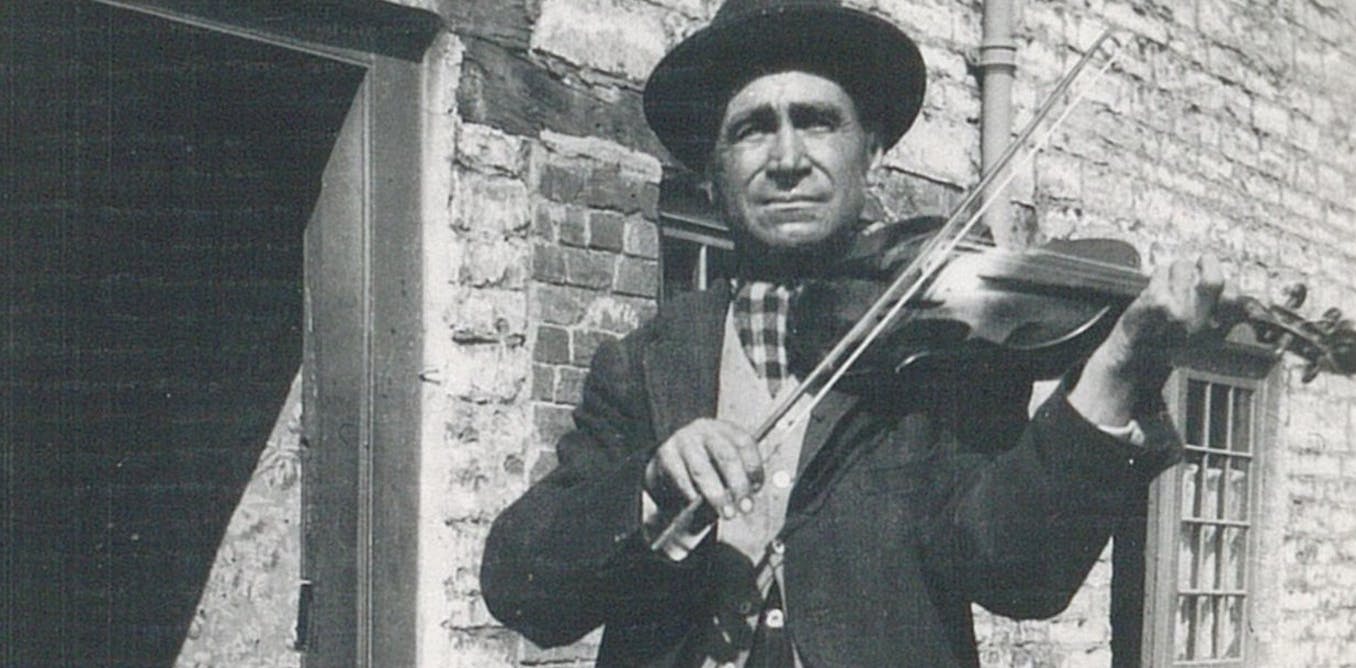
How Romani Gypsy and Traveller people have shaped Britain’s musical heritage
Gypsy, Roma and Traveller History Month was established in Britain in 2008 as a way of challenging stereotypes and prejudice, and raising awareness of the diverse heritage and rich contributions of these ethnic minority groups to society.
Throughout June, Gypsies, Roma, Travellers and allies celebrate and educate others about the history, languages and cultures of these groups. So it’s a great time to acknowledge the immense contributions Romani Gypsies and Irish and Scottish Travellers have made, and continue to make, to our shared traditional music heritage in Britain and Ireland.
Historically, folk song collectors (who set out to document and save Britain’s folk music heritage) were hugely impressed by the repertoires and styles of Romani Gypsies and Travellers. In 1907, after hearing Romani Gypsy Betsy Holland sing in Devon, Cecil Sharp (a key figure in the first English folk revival) wrote: “Talk of folk-singing! It was the finest and most characteristic bit of singing I had ever heard.”
In the 1950s, the eminent Scottish folklorist Hamish Henderson said collecting traditional songs from Scottish Travellers like Belle and Sheila Stewart was like holding a can under Niagara Falls in order to catch water.
Irish Traveller Mary Delaney, recorded by Jim Carroll and Pat Mackenzie in London in the late 1970s, had an enormous repertoire of “outstanding” songs and ballads. And Mike Yates, who made numerous field recordings of English Romanies between the 1960s and the 1980s, documented well over 100 songs from Sussex-based Romani Gypsy Mary Ann Haynes alone.
But when such recordings are incorporated into specialist collections, the ethnicity of the singers is seldom highlighted. The songs, as we argue in our forthcoming article Calling out the Catalogue, are therefore added to the canon of English, Scottish or Irish folk music. This means that the distinctive contributions of Romani Gypsies and Travellers – and their stories – are marginalised and overlooked.
Today, “Gypsy music” as represented in film and television often perpetuates exotic stereotypes, and depicts all Roma, Gypsies and Travellers as belonging to a single homogenous group of romantic outsiders or uncivilised “others”. These stereotypical representations often misguidedly draw on Balkan and Eastern European musical influences to represent all these groups, regardless of nationality.
The lack of recognition of Gypsy and Traveller contributions to Scottish, Irish or English music styles effectively excludes these ethnic minorities from narratives of Britishness.
Recordings of songs sung by Romani Gypsies and Travellers, held in national and regional sound archives, have had a lasting impact on folk repertoires in Britain and Ireland. And they provided rich resources for the second English folk revival of the 1960s and 1970s. For example, the singer Shirley Collins says she first heard A Blacksmith Courted Me (sung “in the most fantastic way”) by Romani Gypsy singer Phoebe Smith, from a recording made by folklorist Peter Kennedy in Suffolk in 1956.
Similarly, guitar legend Martin Carthy learned the song Georgie from a 1974 field recording of Romani Gypsy singer Levi Smith. Smith’s family was a source of many songs popular in the contemporary folk scene. Also, Irish Traveller singer Thomas McCarthy demonstrates the continued strength of Traveller song traditions in his public performances. He also featured in Pat Collins’ recent documentaries on RTÉ.
Many of the songs that continue to form the repertoire of folk singers today were originally sourced from field recordings of Romani Gypsies and Travellers held in archival collections.
Vaughan Williams Memorial Library, Author provided (no reuse)
In our collaborative project Gypsy and Traveller Voices in Music Archives, we’ve been working to raise awareness of one such collection housed at the Vaughan Williams Memorial Library (VWML) in Cecil Sharp House, London. To ensure that the project is relevant and reaches the right people, we’ve been supported by a Romani and Traveller focus group.
To render this collection more accessible, we commissioned Romani academic and poet Dr Jo Clement to design and create a new resource telling the stories of some of the Romani and Traveller people recorded in the 20th century. The resource, free to download, has QR codes linking straight to digitised recordings of Romani and Traveller singers in the VWML catalogue.
We’re also collaborating with Romani film collective Patrin Films on a short documentary. It will tell the personal story of a descendant of one of the extended Romani families recorded by song collectors in south-east England between the 1950s and the 1980s.
Romani Gypsies and Travellers, as the late and influential folk singer Norma Waterson wrote in her preface to Mike Yate’s book Travellers’ Joy (2006) “have come to be at the very heart of what it means, culturally speaking” to be English, Scottish or Irish. So, this Gypsy, Roma and Traveller History Month, let’s acknowledge and celebrate the tremendous importance of Romani Gypsies and Travellers to our shared music heritage.

